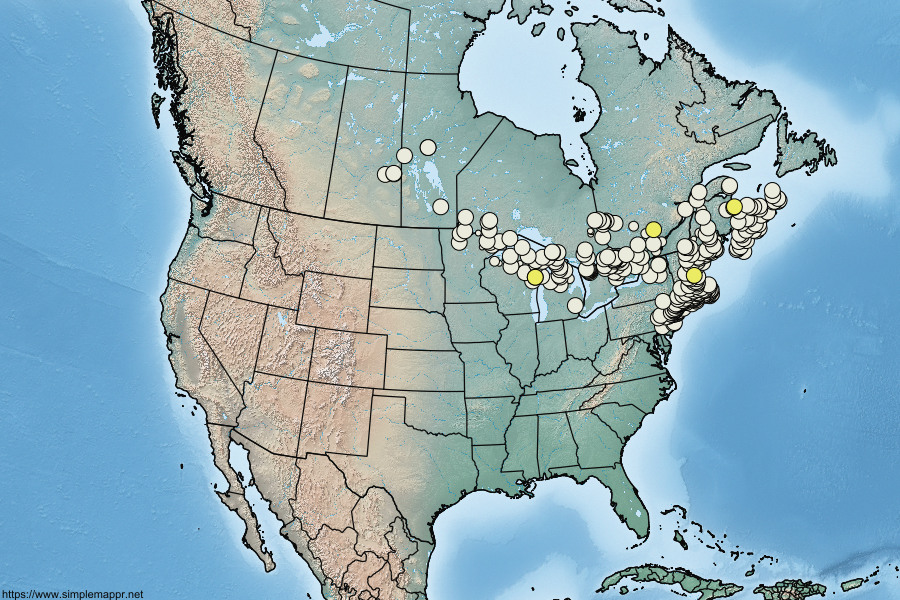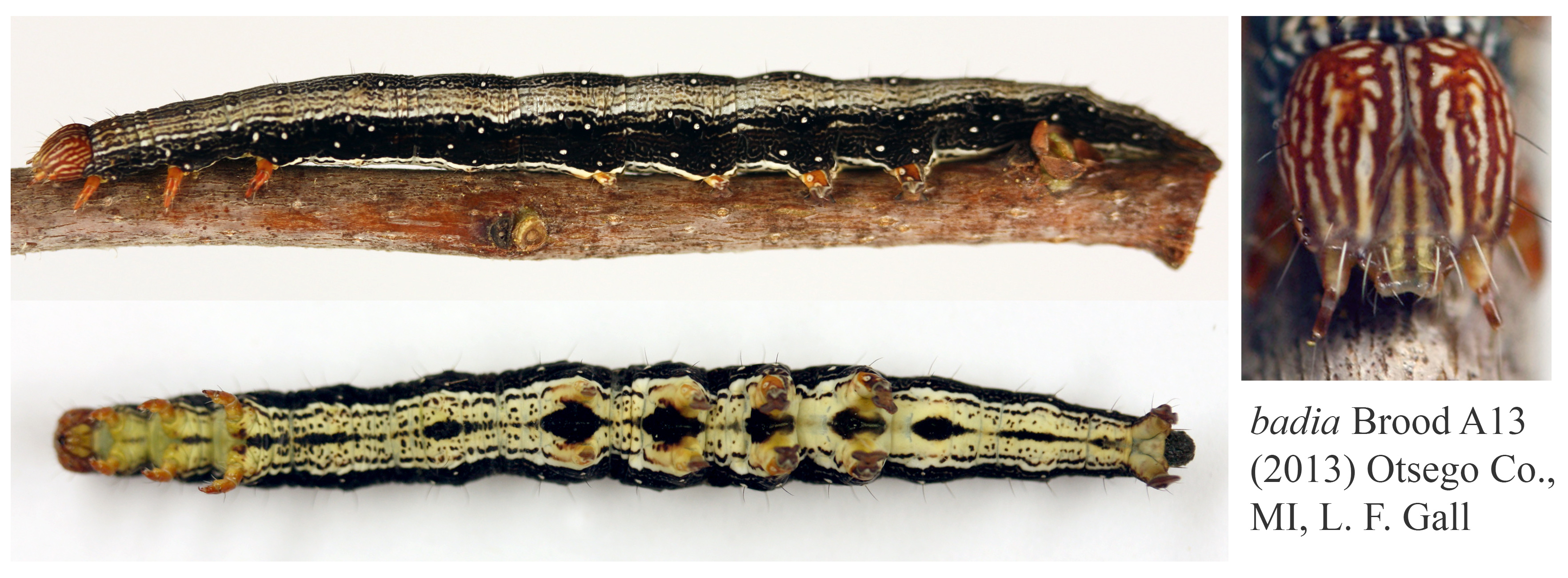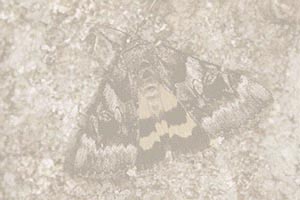 Catocala badia
Catocala badia
Grote & Robinson, 1866
The larvae of
antinympha,
badia and
muliercula all
feed on plants in the Myricaceae, antinympha on Sweetfern (Comptonia peregrina) and
badia and muliercula on Bayberry/Myrtle (Myrica/Morella).
Mature larvae of all three species are highly variable and essentially completely overlap with
one another, with morphs ranging in color from gray, brown, to maroon to black, lightly stippled to mottled to strongly
striped; prominent white dorsal and ventral
pinnacula, no A5 embellishments, head capsule with reddish brown stripes, no lateral filaments, venter yellowish with varyingly
elongated dark spots throughout. Some
muliercula
have a substantial dark line connecting many of
the dark ventral spots, which appears not to be the case in
badia
(traces of the line may be present); however,
sibling larvae from the same
muliercula brood can have connecting lines either present or absent.
The Sweetfern foodplant
separation is crisp in the field and provides the best means of distinguishing
antinympha.
The geographic ranges of badia and muliercula are now largely allopatric with a narrow
zone of sympatry along the coast in southern New England focused on Rhode Island and Massachusetts (badia is largely absent
from the former southern portions of its range, and muliercula has been expanding northward). Larvae not from
Sweetfern in the sympatry zone need to be reared for certainty of identification, the default being
muliercula. Immatures of all and especially antinympha are light steely gray-green and rest exposed on the
upper leaf surfaces, and shift to more typical cryptic underwing behavior on stems and branches when the larvae mature
and their pattern undergoes corresponding change.



|


